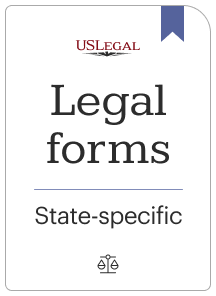

Notice of Default on Residential Lease with Specific Reasons for Default, with Deadline Date to Cure. This notice is pursuant to applicable law. Should the tenant fail or refuse to cure the default as outlined, the landlord may issue a Notice of Termination of Lease Agreement and evict the tenant, and/or take such other action as allowed by law.
In landlord-tenant law, default refers to the failure of a tenant to timely pay rent due. In anticipation of such an occurence, landlords commonly require a new tenant to pay a security deposit, which may be used to remedy defaults in payment of rent and other monetary obligations under the rental agreement. In general, the landlord is required to give the tenant notice of the default before bringing eviction proceedings or applying security deposit proceeds to the payment in default. The fixing of a definite default date for payment of rent can be critical if it becomes necessary to evict a tenant for a default in the payment of rent. Landlords often require a background and/or reference check on prospective tenants in an attempt to minimize defaults in rent payments. A Notice of Default on Lease Agreement with the landlord is a formal written communication issued by the landlord to notify the tenant that they have violated the terms and conditions outlined in the lease agreement. This notice serves as a warning that the tenant needs to rectify the defaulting behavior or face potential legal consequences, such as eviction or legal action. Keywords: Notice of Default, Lease Agreement, Landlord, Violation, Terms and Conditions, Rectify, Warning, Legal Consequences, Eviction, Legal Action. There are different types of Notice of Default on Lease Agreement with the landlord, depending on the nature of the violation: 1. Rent Default: This occurs when the tenant fails to pay rent within the specified timeframe outlined in the lease agreement. Landlords may issue a Notice of Default to inform the tenant about the overdue rent and provide them with a grace period to pay or face further action. 2. Breach of Lease: A tenant may breach the lease agreement by engaging in activities or behaviors that are prohibited or explicitly stated as grounds for termination. Such breaches could include unauthorized subletting, excessive noise, unauthorized pets, or conducting illegal activities on the premises. 3. Property Damage: If the tenant causes significant damage to the property beyond normal wear and tear that violates the lease agreement, the landlord can issue a Notice of Default. This notice informs the tenant about the damages and the necessary steps required to rectify the situation. 4. Unauthorized Alterations: If the tenant makes alterations or modifications to the property without the landlord's consent, violating the terms of the lease, the landlord can issue a Notice of Default. This notice outlines the required actions to rectify the alterations or revert the property back to its original state. 5. Failure to Comply with Community Rules: Many lease agreements include rules and regulations specific to the community in which the property is located. If the tenant fails to comply with these rules, such as not properly disposing of trash or violating parking regulations, the landlord can issue a Notice of Default outlining the violations and the need for immediate compliance. 6. Late or Non-Payment of Utilities: Sometimes, lease agreements stipulate that tenants are responsible for certain utility payments. If the tenant fails to pay these utilities or consistently pays them late, the landlord can issue a Notice of Default, highlighting the violation and demanding compliance. It is crucial for both tenants and landlords to be aware of the different types of Notice of Default on Lease Agreements to ensure compliance with the terms and prevent any legal disputes.
Accessing legal templates that meet the federal and local regulations is a matter of necessity, and the internet offers a lot of options to choose from. But what’s the point in wasting time searching for the right Notice Of Default On Lease Agreement With Landlord sample on the web if the US Legal Forms online library already has such templates accumulated in one place?
US Legal Forms is the biggest online legal library with over 85,000 fillable templates drafted by attorneys for any professional and personal situation. They are simple to browse with all documents grouped by state and purpose of use. Our specialists keep up with legislative changes, so you can always be sure your form is up to date and compliant when acquiring a Notice Of Default On Lease Agreement With Landlord from our website.
Obtaining a Notice Of Default On Lease Agreement With Landlord is easy and quick for both current and new users. If you already have an account with a valid subscription, log in and download the document sample you need in the preferred format. If you are new to our website, follow the instructions below:
All templates you find through US Legal Forms are reusable. To re-download and fill out earlier saved forms, open the My Forms tab in your profile. Benefit from the most extensive and simple-to-use legal paperwork service!